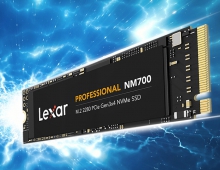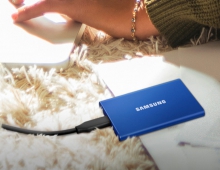
Study Finds Erasing SSD Data Can Be Tricky
The complexity of flash-based, solid-state disks raise security concerns because "deleted" data can easily be retreived, according to a university study.
According to findings of researchers at the University of California, San Diego, when it comes to permanently erase the data stored on an SSD or "sanitize" it as the researchers named this unrecoverable procedure, applying built-in sanitize commands are essential, as long as they are implemented correctly (in firmware). All the other available software techniques for sanitizing individual files were not 100% effective, according to the study.
"Built-in (sanitizing) commands are effective, but manufacturers sometimes implement them incorrectly," the study found. "Overwriting the entire visible address space of an SSD twice is usually, but not always, sufficient to sanitize the drive. Finally, "none of the existing hard drive-oriented techniques for individual file sanitization are effective on SSDs," the study added.
Sanitizing data from storage media is a critical component of data management, especially for governments and the enterprise. The process is well-understood for traditional magnetic storage, such as hard drives and tapes. Newer Solid State Disks (SSDs), however, have a much different internal architecture, so it is unclear whether what has worked on magnetic media will work on SSDs as well.
The researchers designed a procedure to bypass the flash translation layer (FTL) on SSDs and directly access the raw NAND flash chips to audit the success of any given sanitization technique.
"By applying techniques designed for sanitizing hard drives on SSDs, such as overwriting and using built-in secure erase commands is unreliable and sometimes results in all the data remaining intact," the researchers said. The researchers added that sanitizing single files on an SSD is generally much more difficult than on a traditional hard drive.
Overall, the researchers concluded that the increased complexity of SSDs relative to hard drives requires that SSDs provide verifiable sanitization operations.
The researchers also described and evaluated three simple extensions to an existing flash translation layer (FTL) that make file sanitization fast and effective.
"Built-in (sanitizing) commands are effective, but manufacturers sometimes implement them incorrectly," the study found. "Overwriting the entire visible address space of an SSD twice is usually, but not always, sufficient to sanitize the drive. Finally, "none of the existing hard drive-oriented techniques for individual file sanitization are effective on SSDs," the study added.
Sanitizing data from storage media is a critical component of data management, especially for governments and the enterprise. The process is well-understood for traditional magnetic storage, such as hard drives and tapes. Newer Solid State Disks (SSDs), however, have a much different internal architecture, so it is unclear whether what has worked on magnetic media will work on SSDs as well.
The researchers designed a procedure to bypass the flash translation layer (FTL) on SSDs and directly access the raw NAND flash chips to audit the success of any given sanitization technique.
"By applying techniques designed for sanitizing hard drives on SSDs, such as overwriting and using built-in secure erase commands is unreliable and sometimes results in all the data remaining intact," the researchers said. The researchers added that sanitizing single files on an SSD is generally much more difficult than on a traditional hard drive.
Overall, the researchers concluded that the increased complexity of SSDs relative to hard drives requires that SSDs provide verifiable sanitization operations.
The researchers also described and evaluated three simple extensions to an existing flash translation layer (FTL) that make file sanitization fast and effective.





















